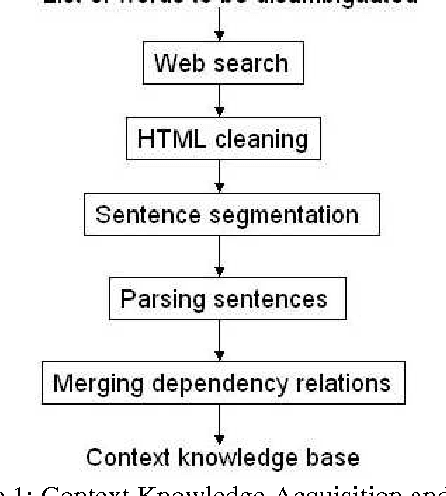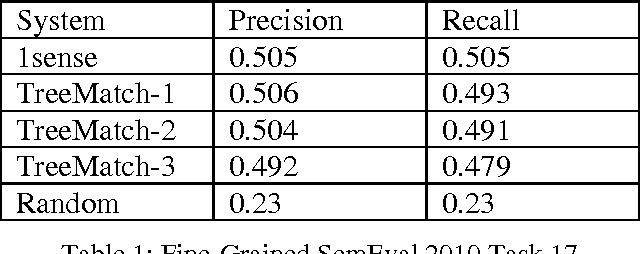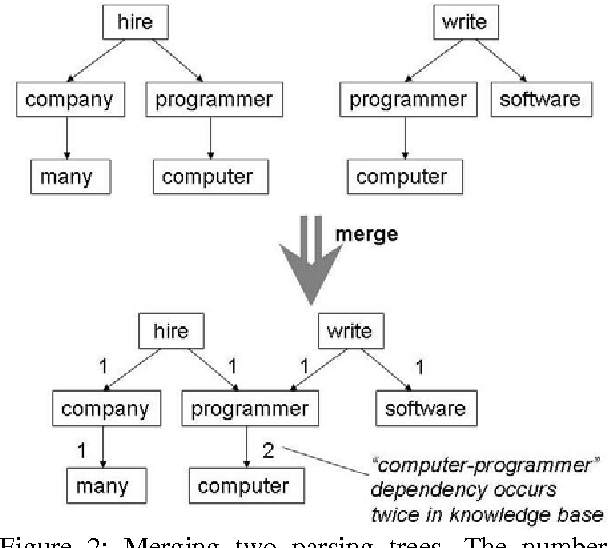Ping Chen
Fuzzy Reasoning Chain (FRC): An Innovative Reasoning Framework from Fuzziness to Clarity
Sep 26, 2025Abstract:With the rapid advancement of large language models (LLMs), natural language processing (NLP) has achieved remarkable progress. Nonetheless, significant challenges remain in handling texts with ambiguity, polysemy, or uncertainty. We introduce the Fuzzy Reasoning Chain (FRC) framework, which integrates LLM semantic priors with continuous fuzzy membership degrees, creating an explicit interaction between probability-based reasoning and fuzzy membership reasoning. This transition allows ambiguous inputs to be gradually transformed into clear and interpretable decisions while capturing conflicting or uncertain signals that traditional probability-based methods cannot. We validate FRC on sentiment analysis tasks, where both theoretical analysis and empirical results show that it ensures stable reasoning and facilitates knowledge transfer across different model scales. These findings indicate that FRC provides a general mechanism for managing subtle and ambiguous expressions with improved interpretability and robustness.
Hierarchical Deep Fusion Framework for Multi-dimensional Facial Forgery Detection -- The 2024 Global Deepfake Image Detection Challenge
Sep 16, 2025Abstract:The proliferation of sophisticated deepfake technology poses significant challenges to digital security and authenticity. Detecting these forgeries, especially across a wide spectrum of manipulation techniques, requires robust and generalized models. This paper introduces the Hierarchical Deep Fusion Framework (HDFF), an ensemble-based deep learning architecture designed for high-performance facial forgery detection. Our framework integrates four diverse pre-trained sub-models, Swin-MLP, CoAtNet, EfficientNetV2, and DaViT, which are meticulously fine-tuned through a multi-stage process on the MultiFFDI dataset. By concatenating the feature representations from these specialized models and training a final classifier layer, HDFF effectively leverages their collective strengths. This approach achieved a final score of 0.96852 on the competition's private leaderboard, securing the 20th position out of 184 teams, demonstrating the efficacy of hierarchical fusion for complex image classification tasks.
Adacc: Adaptive Compression and Activation Checkpointing for LLM Memory Management
Aug 01, 2025Abstract:Training large language models often employs recomputation to alleviate memory pressure, which can introduce up to 30% overhead in real-world scenarios. In this paper, we propose Adacc, a novel memory management framework that combines adaptive compression and activation checkpointing to reduce the GPU memory footprint. It comprises three modules: (1) We design layer-specific compression algorithms that account for outliers in LLM tensors, instead of directly quantizing floats from FP16 to INT4, to ensure model accuracy. (2) We propose an optimal scheduling policy that employs MILP to determine the best memory optimization for each tensor. (3) To accommodate changes in training tensors, we introduce an adaptive policy evolution mechanism that adjusts the policy during training to enhance throughput. Experimental results show that Adacc can accelerate the LLM training by 1.01x to 1.37x compared to state-of-the-art frameworks, while maintaining comparable model accuracy to the Baseline.
A Dataset and Toolkit for Multiparameter Cardiovascular Physiology Sensing on Rings
May 08, 2025



Abstract:Smart rings offer a convenient way to continuously and unobtrusively monitor cardiovascular physiological signals. However, a gap remains between the ring hardware and reliable methods for estimating cardiovascular parameters, partly due to the lack of publicly available datasets and standardized analysis tools. In this work, we present $\tau$-Ring, the first open-source ring-based dataset designed for cardiovascular physiological sensing. The dataset comprises photoplethysmography signals (infrared and red channels) and 3-axis accelerometer data collected from two rings (reflective and transmissive optical paths), with 28.21 hours of raw data from 34 subjects across seven activities. $\tau$-Ring encompasses both stationary and motion scenarios, as well as stimulus-evoked abnormal physiological states, annotated with four ground-truth labels: heart rate, respiratory rate, oxygen saturation, and blood pressure. Using our proposed RingTool toolkit, we evaluated three widely-used physics-based methods and four cutting-edge deep learning approaches. Our results show superior performance compared to commercial rings, achieving best MAE values of 5.18 BPM for heart rate, 2.98 BPM for respiratory rate, 3.22\% for oxygen saturation, and 13.33/7.56 mmHg for systolic/diastolic blood pressure estimation. The open-sourced dataset and toolkit aim to foster further research and community-driven advances in ring-based cardiovascular health sensing.
A Rule Based Solution to Co-reference Resolution in Clinical Text
Mar 12, 2025



Abstract:Objective: The aim of this study was to build an effective co-reference resolution system tailored for the biomedical domain. Materials and Methods: Experiment materials used in this study is provided by the 2011 i2b2 Natural Language Processing Challenge. The 2011 i2b2 challenge involves coreference resolution in medical documents. Concept mentions have been annotated in clinical texts, and the mentions that co-refer in each document are to be linked by coreference chains. Normally, there are two ways of constructing a system to automatically discover co-referent links. One is to manually build rules for co-reference resolution, and the other category of approaches is to use machine learning systems to learn automatically from training datasets and then perform the resolution task on testing datasets. Results: Experiments show the existing co-reference resolution systems are able to find some of the co-referent links, and our rule based system performs well finding the majority of the co-referent links. Our system achieved 89.6% overall performance on multiple medical datasets. Conclusion: The experiment results show that manually crafted rules based on observation of training data is a valid way to accomplish high performance in this coreference resolution task for the critical biomedical domain.
Optimizing for the Shortest Path in Denoising Diffusion Model
Mar 06, 2025Abstract:In this research, we propose a novel denoising diffusion model based on shortest-path modeling that optimizes residual propagation to enhance both denoising efficiency and quality. Drawing on Denoising Diffusion Implicit Models (DDIM) and insights from graph theory, our model, termed the Shortest Path Diffusion Model (ShortDF), treats the denoising process as a shortest-path problem aimed at minimizing reconstruction error. By optimizing the initial residuals, we improve the efficiency of the reverse diffusion process and the quality of the generated samples. Extensive experiments on multiple standard benchmarks demonstrate that ShortDF significantly reduces diffusion time (or steps) while enhancing the visual fidelity of generated samples compared to prior arts. This work, we suppose, paves the way for interactive diffusion-based applications and establishes a foundation for rapid data generation. Code is available at https://github.com/UnicomAI/ShortDF
"Stones from Other Hills can Polish Jade": Zero-shot Anomaly Image Synthesis via Cross-domain Anomaly Injection
Jan 25, 2025



Abstract:Industrial image anomaly detection (IAD) is a pivotal topic with huge value. Due to anomaly's nature, real anomalies in a specific modern industrial domain (i.e. domain-specific anomalies) are usually too rare to collect, which severely hinders IAD. Thus, zero-shot anomaly synthesis (ZSAS), which synthesizes pseudo anomaly images without any domain-specific anomaly, emerges as a vital technique for IAD. However, existing solutions are either unable to synthesize authentic pseudo anomalies, or require cumbersome training. Thus, we focus on ZSAS and propose a brand-new paradigm that can realize both authentic and training-free ZSAS. It is based on a chronically-ignored fact: Although domain-specific anomalies are rare, real anomalies from other domains (i.e. cross-domain anomalies) are actually abundant and directly applicable to ZSAS. Specifically, our new ZSAS paradigm makes three-fold contributions: First, we propose a novel method named Cross-domain Anomaly Injection (CAI), which directly exploits cross-domain anomalies to enable highly authentic ZSAS in a training-free manner. Second, to supply CAI with sufficient cross-domain anomalies, we build the first domain-agnostic anomaly dataset within our best knowledge, which provides ZSAS with abundant real anomaly patterns. Third, we propose a CAI-guided Diffusion Mechanism, which further breaks the quantity limit of real anomalies and enable unlimited anomaly synthesis. Our head-to-head comparison with existing ZSAS solutions justifies our paradigm's superior performance for IAD and demonstrates it as an effective and pragmatic ZSAS solution.
SteLLA: A Structured Grading System Using LLMs with RAG
Jan 15, 2025Abstract:Large Language Models (LLMs) have shown strong general capabilities in many applications. However, how to make them reliable tools for some specific tasks such as automated short answer grading (ASAG) remains a challenge. We present SteLLA (Structured Grading System Using LLMs with RAG) in which a) Retrieval Augmented Generation (RAG) approach is used to empower LLMs specifically on the ASAG task by extracting structured information from the highly relevant and reliable external knowledge based on the instructor-provided reference answer and rubric, b) an LLM performs a structured and question-answering-based evaluation of student answers to provide analytical grades and feedback. A real-world dataset that contains students' answers in an exam was collected from a college-level Biology course. Experiments show that our proposed system can achieve substantial agreement with the human grader while providing break-down grades and feedback on all the knowledge points examined in the problem. A qualitative and error analysis of the feedback generated by GPT4 shows that GPT4 is good at capturing facts while may be prone to inferring too much implication from the given text in the grading task which provides insights into the usage of LLMs in the ASAG system.
TreeMatch: A Fully Unsupervised WSD System Using Dependency Knowledge on a Specific Domain
Jan 05, 2025


Abstract:Word sense disambiguation (WSD) is one of the main challenges in Computational Linguistics. TreeMatch is a WSD system originally developed using data from SemEval 2007 Task 7 (Coarse-grained English All-words Task) that has been adapted for use in SemEval 2010 Task 17 (All-words Word Sense Disambiguation on a Specific Domain). The system is based on a fully unsupervised method using dependency knowledge drawn from a domain specific knowledge base that was built for this task. When evaluated on the task, the system precision performs above the Most Frequent Selection baseline.
From Language To Vision: A Case Study of Text Animation
Jan 05, 2025Abstract:Information can be expressed in multiple formats including natural language, images, and motions. Human intelligence usually faces little difficulty to convert from one format to another format, which often shows a true understanding of encoded information. Moreover, such conversions have broad application in many real-world applications. In this paper, we present a text visualization system that can visualize free text with animations. Our system is illustrated by visualizing example sentences of elementary Physics laws.
 Add to Chrome
Add to Chrome Add to Firefox
Add to Firefox Add to Edge
Add to Edge